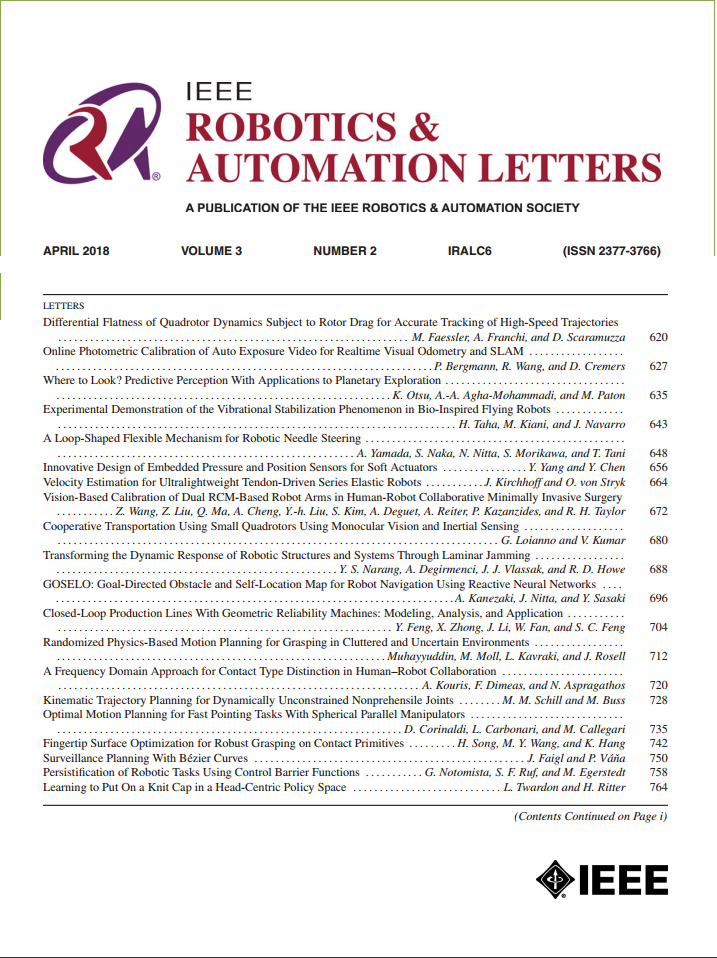Effective Data-Driven Joint Friction Modeling and Compensation With Physical Consistency
IF 4.6
2区 计算机科学
Q2 ROBOTICS
引用次数: 0
Abstract
The complex nonlinear nature of friction in real-world applications renders traditional physical models inadequate for accurately capturing its characteristics. While numerous learning-based approaches have addressed this challenge, they often lack interpretability and fail to uphold the physical guarantees essential for reliable modeling. Additionally, existing structured data-driven methods, despite their efficacy in handling nonlinear systems, seldom account for the specific traits of friction or ensure passivity. To overcome these limitations, we introduce a structured Gaussian Process (GP) model that adheres to the physical consistency of joint friction torque, enabling data-driven modeling in function space that accurately captures Coulomb and viscous friction characteristics while further guaranteeing passivity. We experimentally validate our approach by deploying the friction model on a two-degree-of-freedom (2-DoF) leg prototype. Our approach exhibits robust performance in the presence of non-passive and high-noise data. Experimental results demonstrate that our joint friction model achieves enhanced data efficiency, superior friction compensation performance, and improved trajectory tracking dynamics compared to other friction models.有效的数据驱动关节摩擦建模和物理一致性补偿
摩擦在实际应用中的复杂非线性特性使得传统的物理模型无法准确地捕捉其特性。虽然许多基于学习的方法已经解决了这一挑战,但它们通常缺乏可解释性,并且无法支持可靠建模所必需的物理保证。此外,现有的结构化数据驱动方法尽管在处理非线性系统方面很有效,但很少考虑摩擦的具体特征或确保被动。为了克服这些限制,我们引入了一个结构化的高斯过程(GP)模型,该模型坚持关节摩擦扭矩的物理一致性,使数据驱动的函数空间建模能够准确捕获库仑和粘性摩擦特性,同时进一步保证无源性。我们通过实验验证了我们的方法,将摩擦模型部署在一个两自由度(2-DoF)腿原型上。我们的方法在非被动和高噪声数据的存在下表现出稳健的性能。实验结果表明,与其他摩擦模型相比,我们的关节摩擦模型具有更高的数据效率、更好的摩擦补偿性能和更好的轨迹跟踪动力学。
本文章由计算机程序翻译,如有差异,请以英文原文为准。
求助全文
约1分钟内获得全文
求助全文
来源期刊

IEEE Robotics and Automation Letters
Computer Science-Computer Science Applications
CiteScore
9.60
自引率
15.40%
发文量
1428
期刊介绍:
The scope of this journal is to publish peer-reviewed articles that provide a timely and concise account of innovative research ideas and application results, reporting significant theoretical findings and application case studies in areas of robotics and automation.
 求助内容:
求助内容: 应助结果提醒方式:
应助结果提醒方式:


